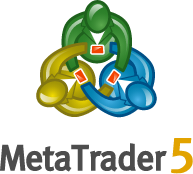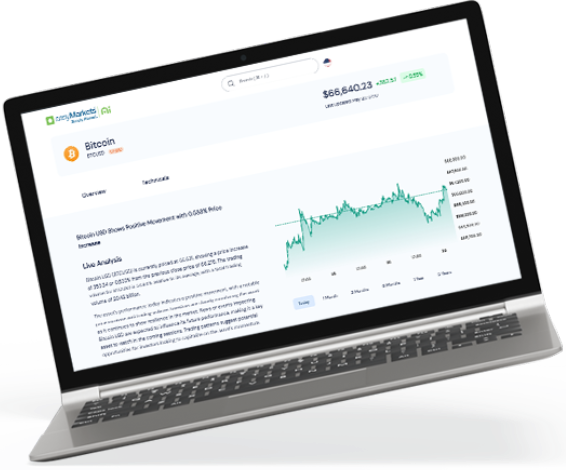What Are Cash Indices and How Can You Trade Them?
Have you ever heard of ‘cash indices’ but you’re unsure what they are or how you can trade them? If so, then this article is for you.
So, what are cash indices?
Cash indices are a Contract for Difference (CFD) instrument that tracks the performance of some of the world’s biggest companies included in an index. These indices measure the performance of these securities over time by tracking their price movements in relation to each other. The most popular ones include the S&P 500 Index, US Dow Jones Index, and the Nasdaq Index.
They have become increasingly popular in recent years and are often used as part of an active trading strategy. They can provide valuable insight into the movements of different markets and allow traders to act quickly when market conditions change suddenly.
Read on to learn why you should consider trading them.
How does cash index trading work?
Cash indices are traded through CFDs. A CFD is a derivative product that allows you to trade both the upwards and downwards price movements of a financial instrument without ever having to own the underlying asset. When you open a CFD position, you’ll enter into an agreement with the broker to exchange the difference in price between the opening and closing of a position.
Down
Rate
15430.5
Up
Rate
15430.5
Potentially benefit from price fluctuations without ever purchasing the underlying index.
-
Choose the cash index
you want to trade -
Enter your
order amount -
Decide if it will go
up or down in price.
To further understand how they work, let’s take a look at a couple of examples.
A CFD Cash Index Trading Example
The US 500 is trading at 4000. This means you can buy one contract of the US 500 at 4000.
Let's say Apple is releasing its earnings shortly, and you expect disappointing results from the tech giant. You think this will have a knock-on effect on the US 500, so you decide to short one contract of the US 500 in the expectation it will pull back to around the 3900 mark later that day.
Outcome A: US 500 rises

Apple's earnings are strong, causing the US 500 to rise to the 4100 level, so you decide to cut your losses and close your position. You bought it at 4000 and sold it at 4100, resulting in a 2.5% loss.
Outcome B: US 500 falls

Apple’s earnings were weaker-than-expected, causing the US 500 to fall to 3900. You bought it at 4000 and sold it at 3900, resulting in a 2.5% profit.
Check out all the available cash indices as well as the spreads, contract sizes, and margin requirements.
Why should anyone trade Cash Indices?
There are many reasons why investors may consider trading cash indices. Firstly, they provide traders with instant diversification across multiple markets. Allowing them to gain exposure to a huge number of stocks by investing in a single CFD index.
This allows them to spread their risk across different sectors and countries without buying individual securities. Furthermore, since they are typically highly liquid instruments, traders can enter and exit positions quickly without incurring large transaction costs.

With easyMarkets you can access a wide range of indices on all our trading platforms.
Cash indices trading is typically less volatile than individual stocks or commodities. This makes them ideal for those who want to take advantage of market movements without taking on too much risk.
Since they are based on the performance of multiple assets at once, they tend to be less affected by the performance of any single asset. This can help investors protect their portfolios from sudden market downturns and minimize their losses in the event of a crash.
Additionally, they hold a unique advantage over index futures in that they have no expiry dates. This means traders can close their trade whenever they wish, unlike index futures, where traders must close the contract before the expiry date, whether they realize profits or losses.
Most popular Cash Indices
The US 500 is composed of the top 500 publicly traded US companies, including leading representatives from various industries, such as technology, energy, healthcare, and engineering. This index provides insight into the overall performance of the US stock market by weighing each company's market capitalization. It is one of the most widely followed indices and is often used as a benchmark for measuring the performance of other investments.
The Nasdaq comprises the top 100 publicly traded US companies listed on the Nasdaq exchange, the world's second-largest stock exchange. This index provides insight into the performance of technology stocks and other sectors such as healthcare and consumer services.
The US Dow Jones Index comprises the 30 largest publicly traded US companies, including representatives from various industries such as finance, energy, and technology. This index provides insight into the overall performance of the US stock market by weighing each company's price. It is one of the world's most well-known and oldest indices and is often used as a benchmark to measure the performance of other investments.
The Japan 225 is composed of the top 225 publicly traded Japanese companies, tracking the performance of the largest, most financially stable companies listed on the Tokyo Stock Exchange, such as Honda, Sony, and Toyota. This index provides insight into the overall performance of the Japanese stock market by weighing each company's price.
The DAX 40, also known as the DAX Index, comprises the 40 largest and most liquid companies by market capitalization listed on the Frankfurt Stock Exchange (FSE). This index is a strong measure of Germany and Europe's economy.
Conclusion
Trading cash indices can be a great way for those who want to gain exposure to the stock market without investing a large amount of capital. They also provide insight into the performance of various markets and sectors, allowing investors to diversify their portfolios and make informed decisions. Investors can use them to potentially optimize returns while reducing risk with the right knowledge and strategy.
Have you ever heard of ‘cash indices’ but you’re unsure what they are or how you can trade them? If so, then this article is for you.
FAQs
Indices provide an easy way to track the performance of the stock market and the overall health of a country’s economy.
Economic news, company financial results, company announcements, geopolitical shifts, changes to an index's composition can affect an index's price. These factors can cause fluctuations in the index's price.
1. Create an account and log in
If you don’t have an account with us, you can create an account here. After you successfully create an account, go ahead and log in.
2. Select the cash index you want to trade
We have a range of indices to trade from, including popular options such as the S&P 500, Nasdaq and DOW Jones.
3. Decide whether to go long or short
After you’ve selected a cash index you wish to trade, you’ll need to decide whether you want to open a long or short position.
4. Set your stops
To mitigate the potential risk of losses, always ensure you have stop loss orders in place before executing a position.
5. Open and monitor your trade
After you open your trade, it’s important to monitor your positions frequently to evaluate the performance.














